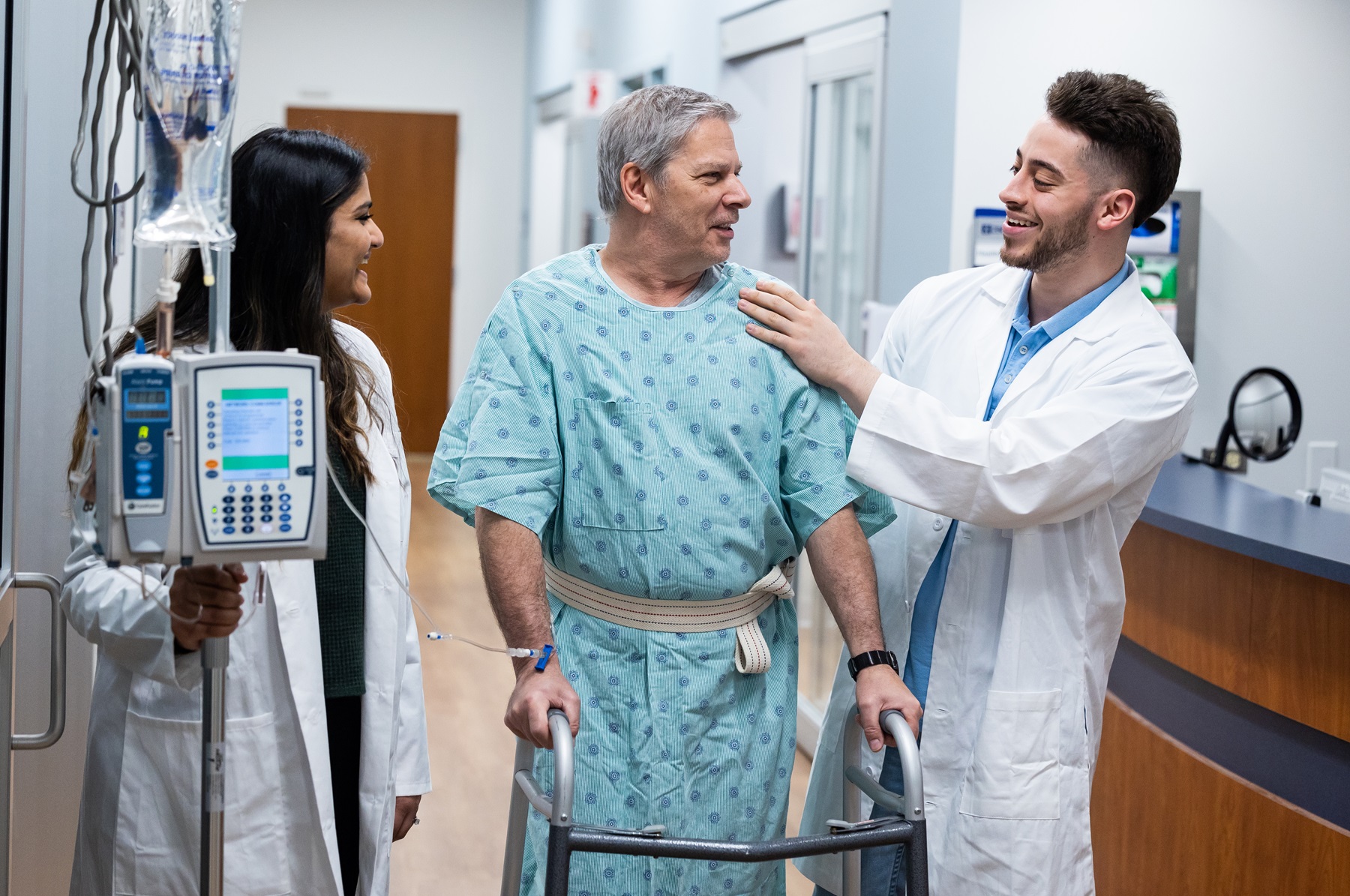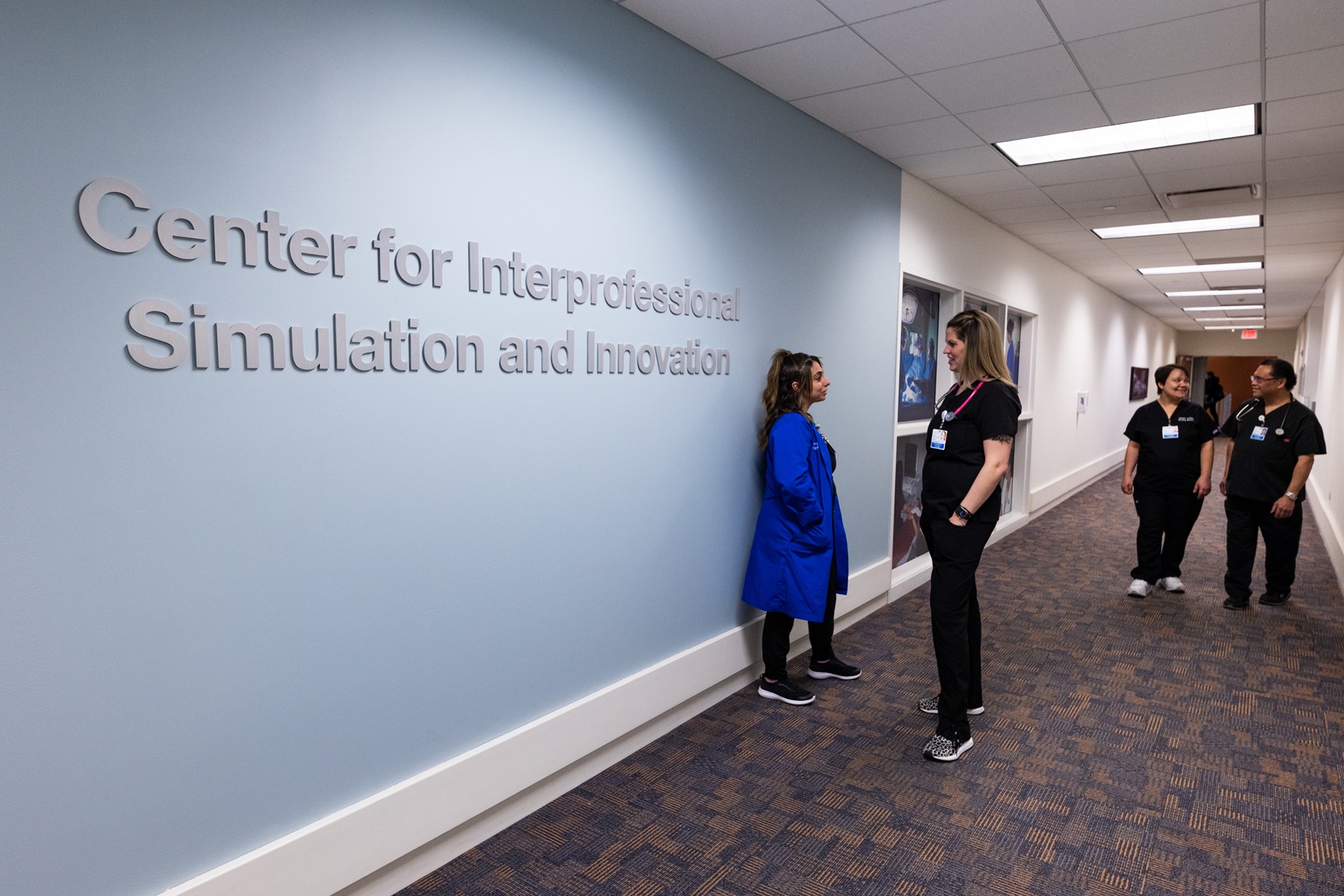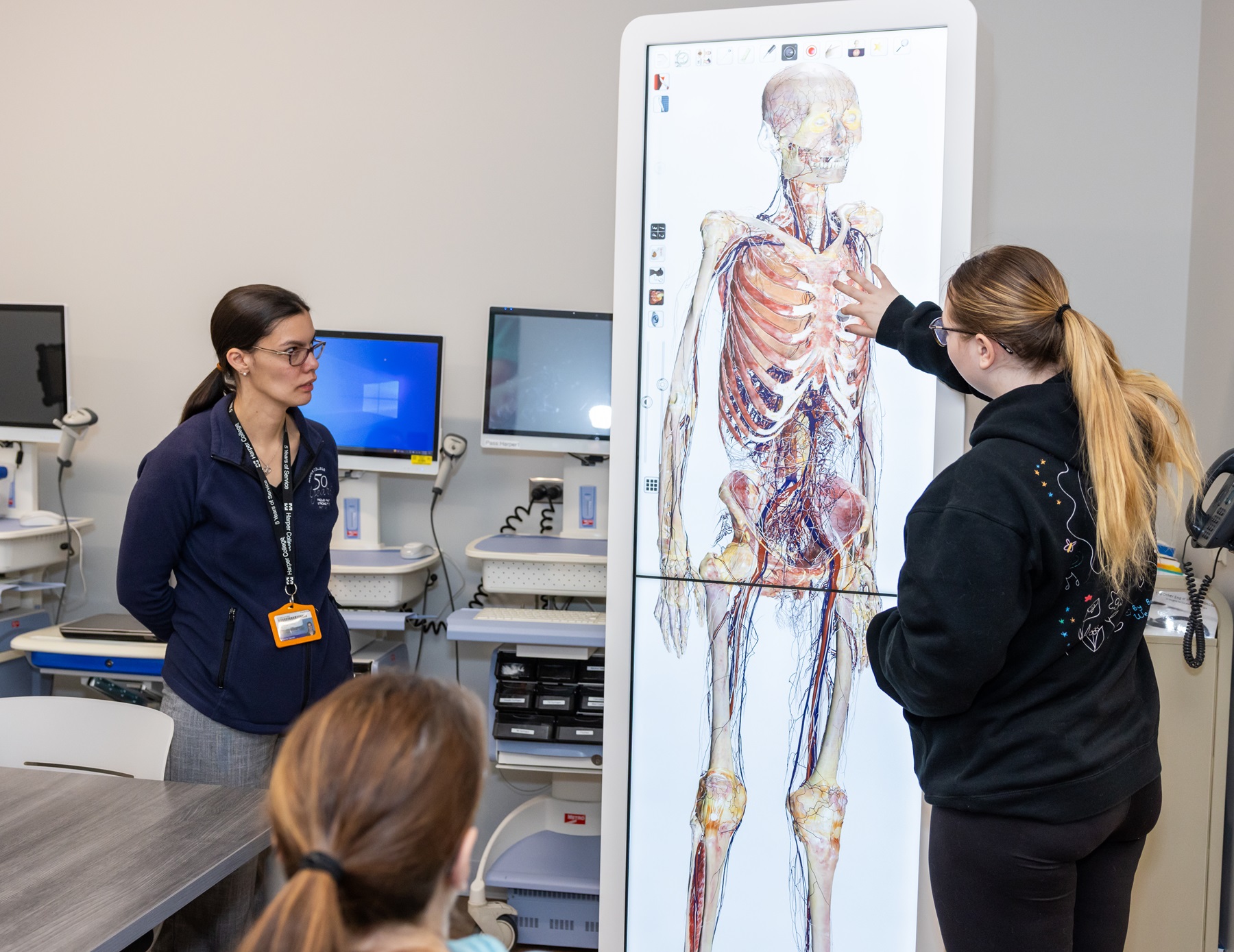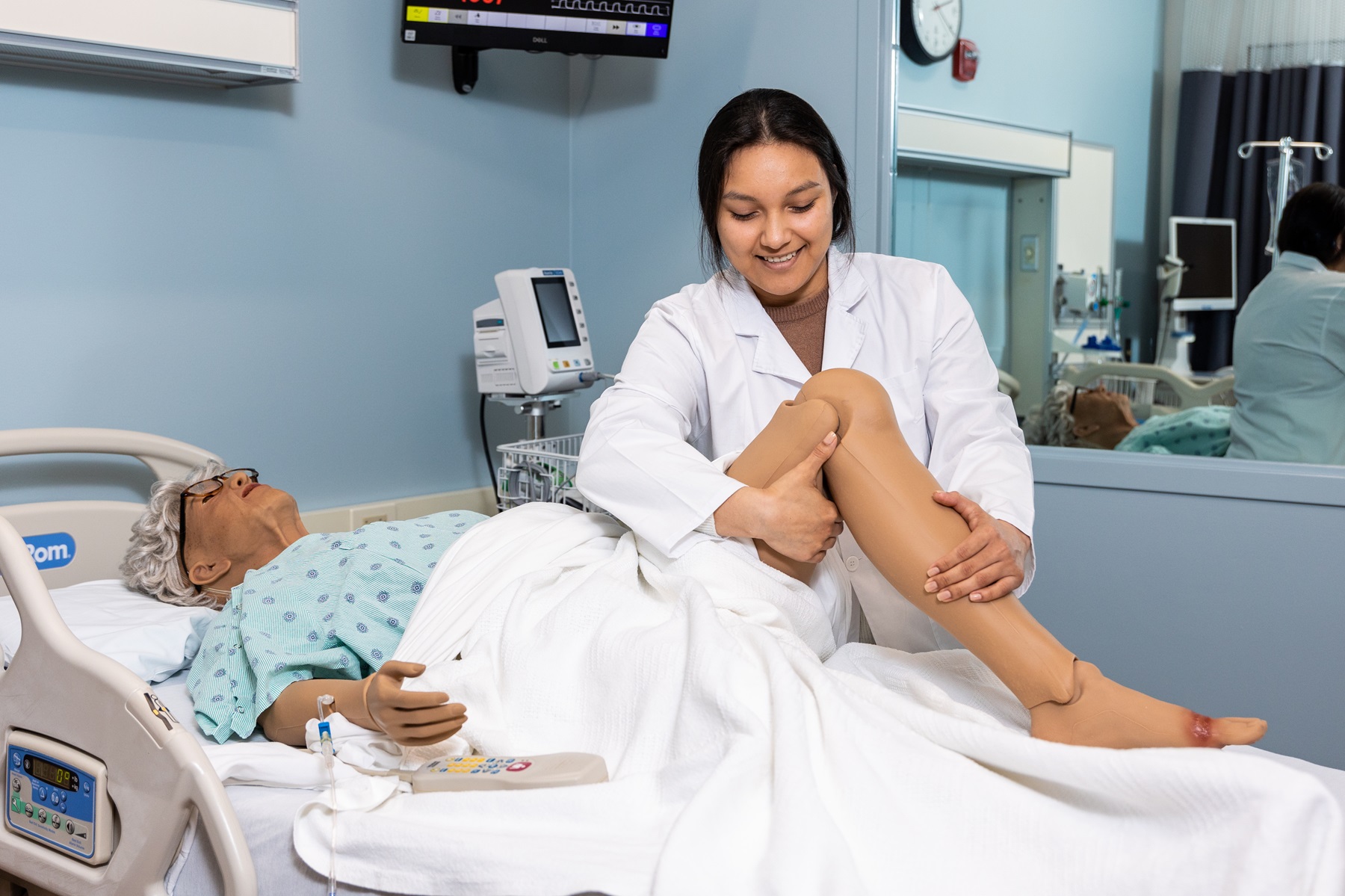Harper College will be closed from Wednesday, December 24, through Sunday, January 4, for Winter Break.

 Health care is a team sport. From nursing to imaging, techs to doctors, it’s important
that everyone involved in patient care knows how to work together.
Health care is a team sport. From nursing to imaging, techs to doctors, it’s important
that everyone involved in patient care knows how to work together.
That’s why Harper College’s Simulation Hospital became the Center for Interprofessional Simulation and Innovation in 2022 – to help health careers students learn to work as partners on state-of-the-art simulation equipment that prepares them for a teamwork-based health career.
Interprofessional education (IPE) is when “students learn with, about and from members of other professions,” explained Caitrin Sobota, director of interprofessional education and healthcare simulation.
“Before we started interprofessional initiatives here, students could go through an entire health program and never know about any other program on campus,” said Sobota, who is a certified healthcare simulation educator (CHSE). “They were in their own little silo.”
Changes in 2022 made the center more available to other programs. This included updates such as an exam room for office visits and a long-term care room set up to resemble a nursing home environment.
Now, six programs use the center, with more to come:
This focus on working together means Harper is the only community college in the nation that’s on the digital map for Nexus, the National Center for Interprofessional Practice and Education’s directory of IPE centers, programs and initiatives.
About 300 students take classes in the center each semester. There, they are exposed to state-of-the-art technology and important lessons about working in health care.

“Modern health care is very collaborative,” explained Sobota, a registered nurse with a master’s degree in nursing. “When our students start their careers, they’re going to be with a team that works together. We prepare them for that, not only for their own personal success but for the success of their patient-centered care team.”
Brigid O’Neill, a dietetic internship student, agreed. “The Simulation Center promotes collaboration among various health care disciplines like medicine, nursing, pharmacy and more,” she said. “Bringing these disciplines together creates an understanding of each other's roles, fostering teamwork and enhancing patient care – which is always all our main goal.”
In contrast to other academic areas, nothing in the center is graded. This lowers the pressure of getting good marks so students can focus on learning in the moment.
“This is a supportive learning environment where our students feel they can do their best, but if they make a mistake, they know it’s OK,” Sobota said. “We want this to be both a safe space and a brave space.”

The most advanced simulation tool at the center is a virtual dissection device called an Anatomage Table. Three-dimensional images of five unique cadavers are programmed into the table. Students can get up close and personal with human anatomy, from blood vessels to bones.
The center also features advanced patient simulators. These allow students to practice care without risk of harm. Wireless “patients” simulate breathing, blinking, vital signs like a heartbeat and can even speak “live” with students, voiced Lab Technician Leland Nolan. Students can check the simulators’ heart, lung and bowel sounds. They can give injections, insert catheter tubes and even deliver a baby.
To get experiences in physical therapy or mental health, students work with actors to help relieve their fictional symptoms, gaining hands-on experience in therapeutic communication.
One of the most powerful ways the center promotes IPE is its interprofessional simulation activities, which bring students together for all-services teamwork.
In spring 2022, students worked together to care for a patient (an actor), who had suffered a simulated stroke. Students from each program performed an individual assessment of the patient before huddling with their colleagues. They then reported to their classmates, honing their communication skills.
“They learn so much about what the other professions do,” Sobota said. “The students are very supportive of each other. It’s valuable for them to practice working as a team with students who aren’t the same people they see in class every day.”
On March 18, Hospital Day will feature students from nursing, physical therapy, dietetics and CNA, who will come together and work in interprofessional huddles to provide a “day in the life” of care for a simulated patient.
“The Simulation Center gave me the confidence I needed to practice before entering my first real patient’s room and interviewing them,” O’Neill said. “It gave me room to be comfortable with asking important and difficult questions to patients and allowed me to learn from my mistakes.”
On the first Friday of each semester, the center also hosts Interprofessional Immersion Days, during which interdisciplinary students learn about a topic of common interest, such as caring for patients from the LGBTQIA+ community or hearing from a veteran about health professions and hope.

For O’Neill, hands-on teamwork has been central to her education.
“Collaboration with students from various disciplines can broaden your thinking and problem-solving skills,” she said. “It can expose you to different methods to give you a better understanding of issues and provide solutions you wouldn’t normally think of. Working with students from other health care fields gives you insight into their struggles, treatments and workflows to get the bigger picture of total patient care.”
Sobota and the team of center staff expect increasing opportunities for interprofessional collaboration and education in the future, so they’re focused on developing even more activities that bring students together.
The Center for Interprofessional Simulation and Innovation can help students prepare for impactful health careers long into the future. But it’s not cool technology that inspires Sobota, it’s the students.
“They all start out so nervous, they don’t really know where they’re going to end up,” she reflected. “And by the end of their time here they’re strong, confident team members. I love watching the growth of our students.”
Ready to learn more? Take a virtual tour of the center.